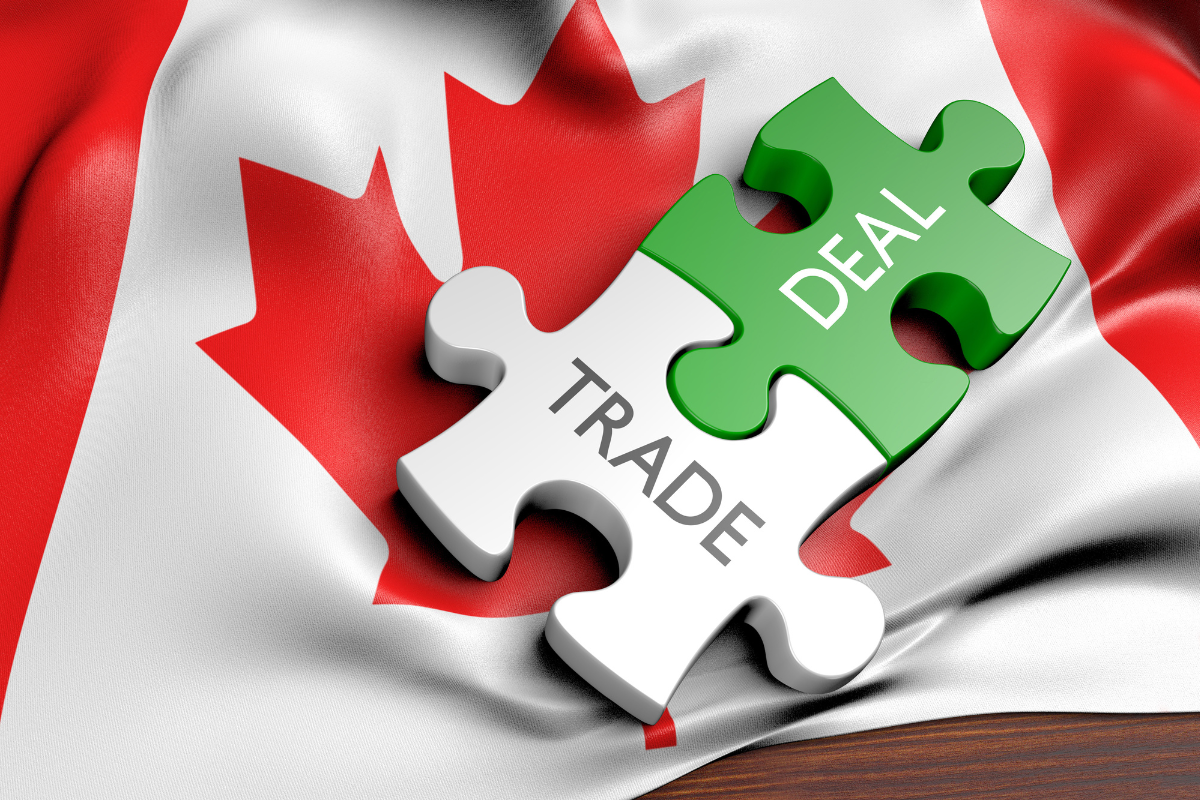What happens if Canada’s largest trading partner threatens a 25 per cent tariff on Canadian-made goods?
That’s no longer a hypothetical question. Recent trade policy proposals out of the United States have sparked real concern among exporters, especially those with deep ties to the U.S. market.
To better understand business sentiment, the World Trade Centre Toronto surveyed companies who are involved, or have an interest in international trade, including alumni from our trade programs. We received input from 50 leaders at small and medium-sized enterprises. The results offer a valuable window into how Canadian firms are assessing risk, rethinking strategy, and positioning themselves for whatever comes next.
1. The U.S. market is a major revenue driver
- On average, more than 30 per cent of SME revenue comes from U.S. sales, but this is not evenly distributed.
- For nearly one in five businesses, that number exceeds 75 per cent, meaning a critical mass of businesses are significantly exposed.
- Exposure is not limited to large firms; tariff vulnerability cuts across size and sector.
Takeaway: A substantial number of Canadian SMEs are deeply tied to U.S. buyers and face immediate risks from new tariffs.
2. Jobs are threatened, but big job losses are not expected immediately at most firms
- 20 of the 50 respondents anticipate no employment changes at all.
- 19 anticipate reducing hours for existing staff or delaying new hires.
- 8 expect to make moderate cuts to staff.
- Only 3 respondents anticipate that major downsizing may be necessary.
Takeaway: Businesses intend to hold on to talent, but long-term pressure could build into a “delayed impact” scenario resulting in substantial job losses over time if tariffs persist.
3. Innovation could take a back seat
- 63 per cent of SMEs would scale back or postpone research and development.
- Smaller firms and those in early growth stages are especially at risk.
- Some see innovation as a way to adapt, but most cite budget pressures.
Takeaway: Tariffs threaten to slow innovation, already an area where Canada lags other jurisdictions, potentially weakening future competitiveness.
4. Diversification is a Top Priority
- 72 per cent of businesses are exploring new export markets or expanding existing non-US ones.
- The focus includes Europe, Asia, and Latin America.
- Many are taking a phased approach, starting with smaller investments, or digital entry strategies.
Takeaway: SMEs recognize the need to reduce reliance on a single market and are already pivoting.
5. Supply chains are under review
- More than half (56 per cent) are rethinking suppliers or shifting production to cut costs.
- 31 per cent are considering moving some operations outside Canada to bypass tariffs.
- Firms are also exploring product redesign and "tariff engineering" strategies.
Takeaway: Many businesses are responding with agility, looking for structural changes to remain competitive. But the potential for operations to move outside Canada is a looming threat.
6. Leaders are concerned, but not panicking
- Sentiment shows that businesses are concerned about tariffs but remain cautiously optimistic about adapting.
- Views on retaliation are mixed, with many unsure whether it would help or hurt.
- Confidence in long-term resilience is relatively high.
Takeaway: The sector is bracing for impact, but the mindset is focused on problem-solving rather than fear.


